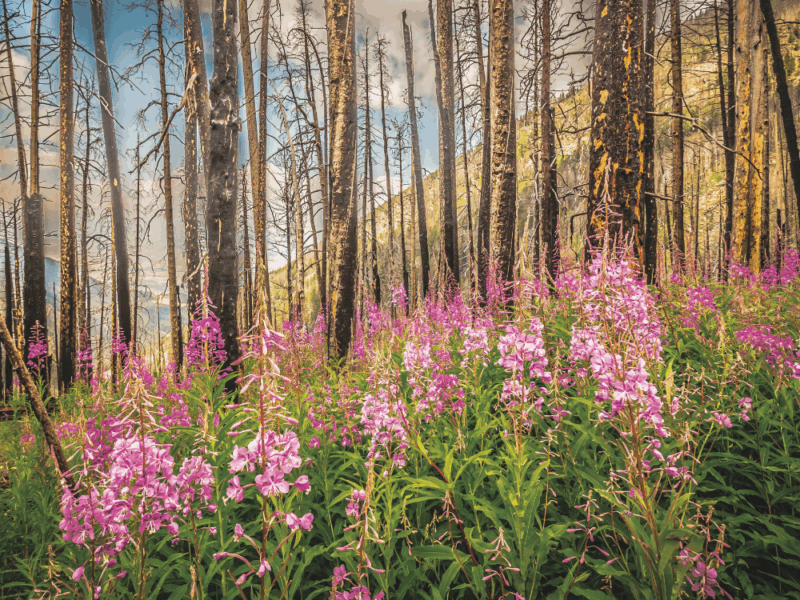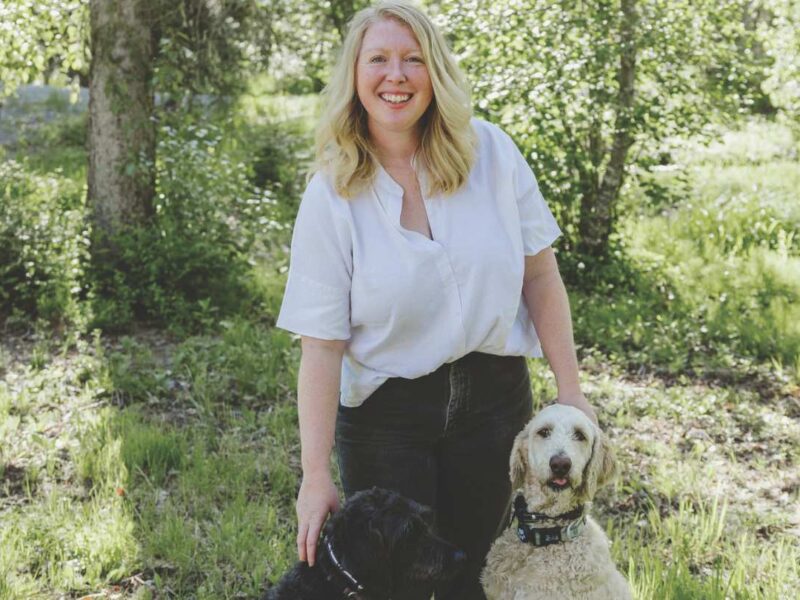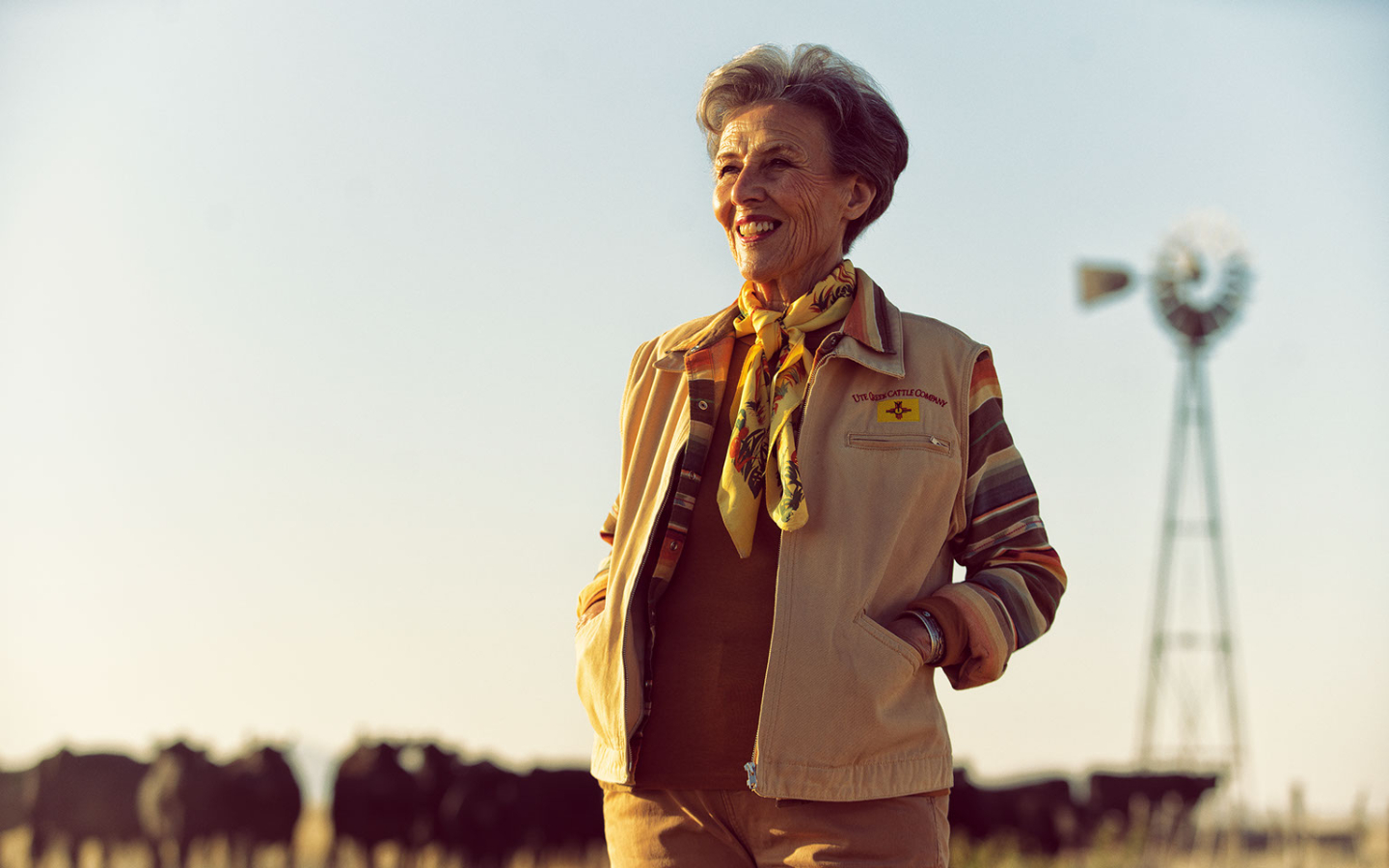
Feed your tortillas to the birds
And I do. I cut tortillas into tiny squares and toss them out in the yard. My birds consume finely chopped apple peels and potato peels and ends off asparagus. They enjoy the bounty and reinforce my belief in repurposing as opposed to wasting. Year-round, bird blocks are offered, and the quail feeder is stocked with cracked corn. Handfuls of sunflower seeds are easily spread with a sling of the arm.
In late summer, the wild bird sanctuary’s enclosed grape arbor produces clusters of fruit that stir great flurries of wings and engorge tiny bellies. A few currant bushes are producing fruit and continue growing. Year-round, abundant, diverse grass seeds and insects nourish my feathered friends. My friends call me “Birdy”.
Returning home, stepping back in time
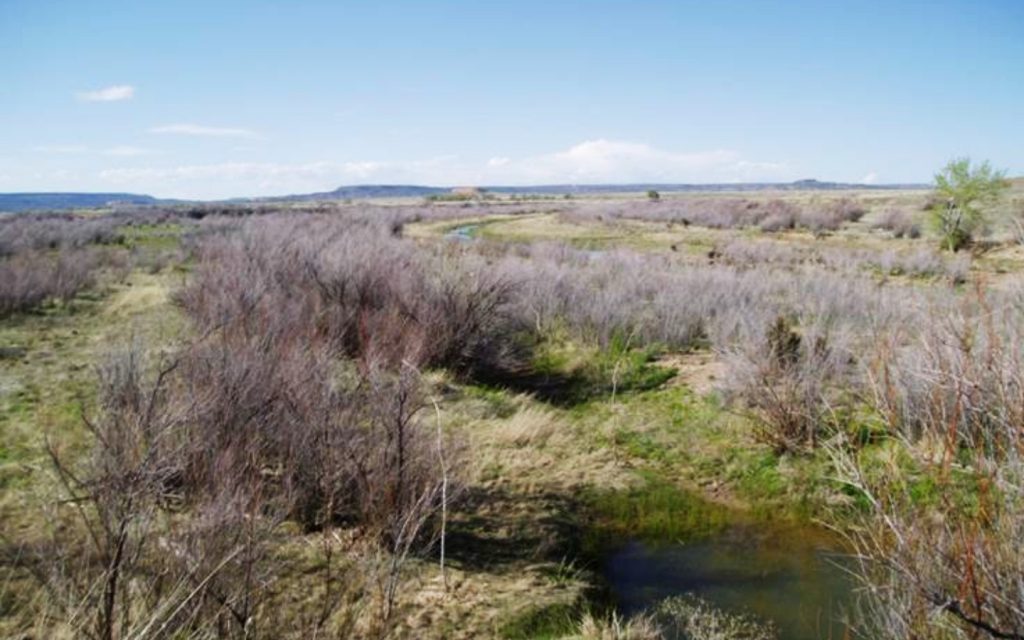
Ute Creek, choked by Saltcedar in 2002. 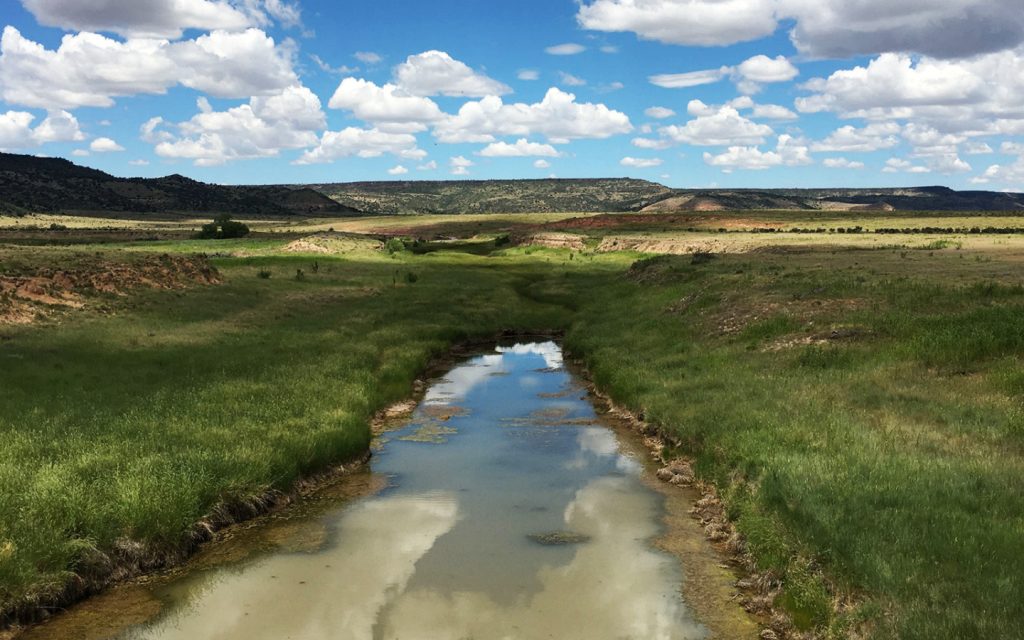
Ute Creek, after Saltcedar removal in 2016.
Twenty years ago, after I inherited one-fifth of my family’s ranch, my husband, Jack, and I returned to settle in Bueyeros, New Mexico. Although I lived a good life in Cheyenne, Wyoming for thirty-seven years, my heart had never left the ranch. Returning home was stepping back in time and I picked up right where I had left off; everyone looked older but me (or so I thought!).
We returned to grasslands suffering from neglect, drought and overgrazing. The ten miles of Ute Creek through the ranch was severely infested with saltcedar (also known as tamarisk) which had sucked the streambed dry. The cow herd was in-bred and wild. We had no working pens, and the bunkhouse was not livable. There was a lot of work to do on the land, and we needed help. The Natural Resource Conservation Service (NRCS) in nearby Roy, New Mexico welcomed us. With NRCS as a partner, we had new opportunity and a vision for restoration of the land. So we began.
An Environmental Quality Incentives Program (EQIP) contract included aerially treating saltcedar in the riparian area. Fencing on both sides of the creek laid the foundation for implementing an adaptive grazing system: we divided our pastures from four to twenty-three. We installed two ten thousand-gallon storage tanks with a pipeline distribution system to water pastures.
The cow herd was up-graded with quality Angus genetics and is the tool used for time-managed grazing, natural fertilization, animal impact, soil health and forage production. Progress would not have happened without the cow herd. We provide a high standard of care, low-stress handling and animal compassion for our “girls”. Cattle are an integral part of the natural forage/wildlife habitat production cycle, and calf sales return ranch operating revenue. In the food production cycle, calves are fed, processed and distributed providing healthy, delicious beef for consumers.
Sanctuary at the heart of ranch
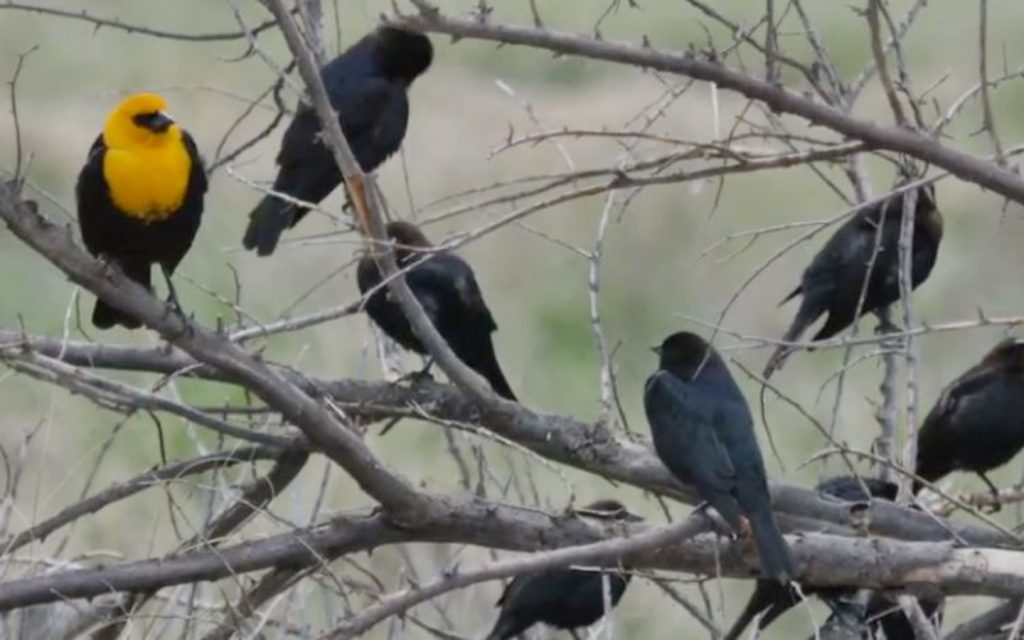
Little did I know at the start of all that work that my life-long penchant for birds would also grow into an integral part of our family ranch. In celebration of a milepost birthday, our daughter Libby led a group-gift effort among friends to raise $2,500 to create a Wild Bird Sanctuary for her mother. Through an introduction to the USFWS Partners program, the gift was matched and soon, north of my kitchen window, 23-acres of shortgrass prairie was fenced and a drip irrigation system laid in the ground. We added a wildlife water-guzzler, a grape arbor, 16 bird houses, a few berry bushes and bordering trees. We mowed a walking path and built three contemplative areas to complete the project. For over a decade the sanctuary has provided habitat for breeding and nesting, cover for raising nestlings, water and food for shortgrass prairie birds.
Bird watching gives our family great pleasure. Two years ago, a pair of orioles selected a large elm tree near the portal of our house to hatch and raise four young. Captivated by their brilliant plumage, we recently observed three oriole couples constructing new nests and I wondered if (and hoped) they were from an earlier fledge and had returned home. We are frequently drawn to endearing coveys of Scaled Quail feeding in the yard with tiny little ones swiftly following their mothers. Ranch dinners served on the portal are highlighted by hummingbirds buzzing about the table over cowboys’ heads.
Birds are natural indicators of healthy ecosystems. The combination of setting aside the 23-acre sanctuary and implementing ranch-wide conservation practices has increased the bird species count from 17 in 2004 to over 100 in 2018. Science, and our eyes and ears, tell us we’ve made a big difference to ecosystem health on the ranch.
The approaching silence of the grasslands
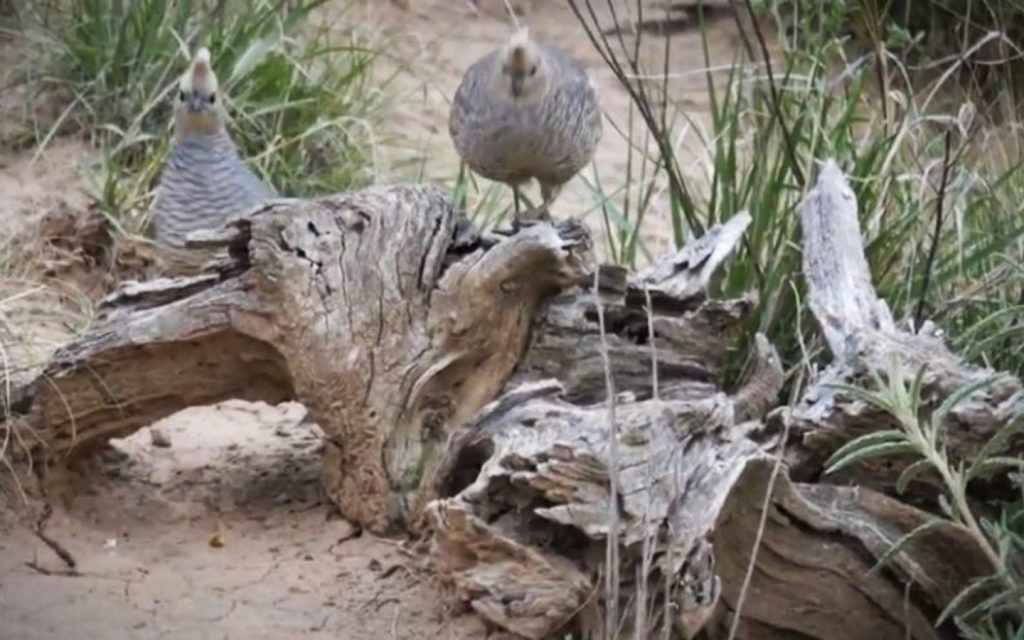
Sadly, due to the climate crisis, persistent drought and development, grasslands are imperiled nationwide, causing severe declines in grassland and migratory bird numbers. Over the past 50 years some species have declined 70% and all species have reduced by 50%. We private landowners have a responsibility to raise our level of awareness and respond to the crisis. Nature-based climate action regenerates soil and grass production and returns both cash and wildlife habitat.
Healthy soil stores carbon, reduces greenhouse gasses and increases forage across grasslands. Other lasting benefits provide immeasurable returns for people, birds, wildlife, livestock, food production, climate and landowner livelihoods. It’s important to acknowledge private landowners provide forage, water and clean air for wildlife, because everything is connected as we partner with nature. Responsibility for the outcome rides on the shoulders of landowner leaders.
So don’t feed only your tortillas, scraps and grains to the birds; think on a large landscape scale. A labor of love, two decades of time, and implementing conservation practices has proven transformational at Ute Creek Cattle Company.
Featured photo at top by Christi Bode.


